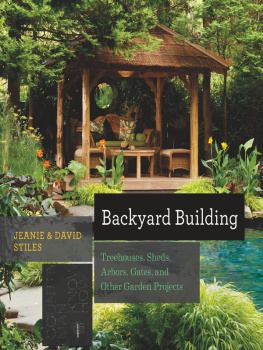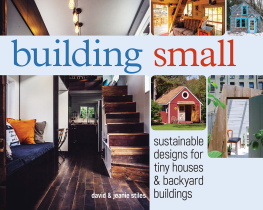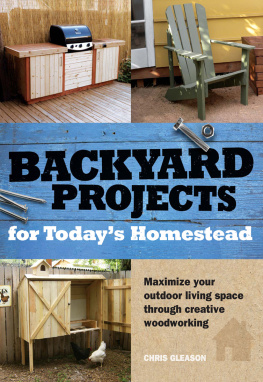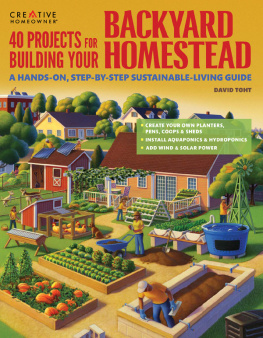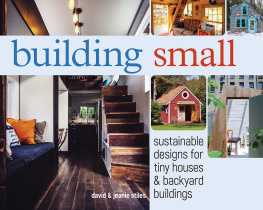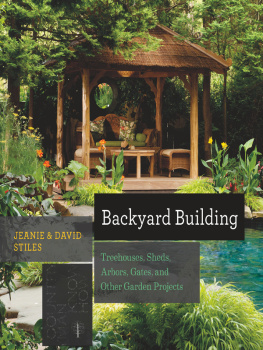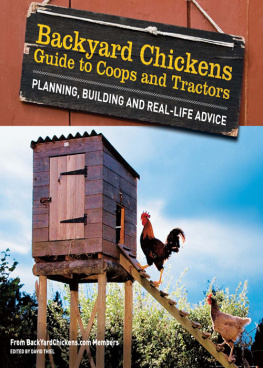

DEDICATION
To Jean and William
To Our Readers
Since many of our readers invariably change our plans to fit their own particular needs, we assume that they will seek qualified, licensed architects or engineers to make more detailed plans for submission to their local building departments as required.
Note: Every effort has been made to design all the projects in this book to be safe and easy to build: however, it is impossible to predict every situation and the ability of each carpenter who builds our projects. Therefore, it is advised that the reader seek advice from a competent on-site expert. Please send us photos of your completed projectswe always love to see them.
Disclaimer: David and Jeanie make no express or implied warranties, including warranties of performance, merchantability, and fitness for a particular purpose regarding this information. Your use of this information is at your own risk. You assume full responsibility and risk of loss resulting form the use of this information. The authors and publisher will not be responsible for any direct, special, indirect, incidental, consequential or punitive damages or any other damage whatsoever.
Introduction
If you mention backyard building to most people, they will immediately think of some practical, if not downright utilitarian structure such as a toolshed, workshop or small office: in a busy modern world, it seems, even the garden has to work for a living. But a backyarda garden, your very own bit of the great outdoorsis also for enjoyment, relaxation and entertainment, and there are designs here for playhouses, treehouses, pergolas, summerhouses, and outdoor seating, which could be the focal point of an existing beautiful garden or the incentive to get out there and finally tackle those weeds.
We still hope that in these pages you will find the perfect shed, if thats what youre looking foreither straight from our plans or by using them as a springboard for your own ideas and adaptations, as this book is intended to be as much inspiration as simple how to. Some projects are described in greater detail, others in more general termsas, once you understand the principles of construction (which are not as daunting as they might at first appear), you can see how to make more or less anything. Weve included designs that could be built by almost anyone in a few hours, as well as more ambitious and elaborate ones requiring a bit more experience and dedication; but all of them are within the capabilities of the average handyman with average tools. If youve never done carpentry beforeor not since being forced to in schooltry one of the easier projects first: you may be surprised at how quickly you discover your inner craftsman or craftswoman. Enjoy your backyard building.

Techniques & Materials
Everything is easier when you know howand heres an assortment of useful information and tips weve learned along the way, to help the job go smoothly.
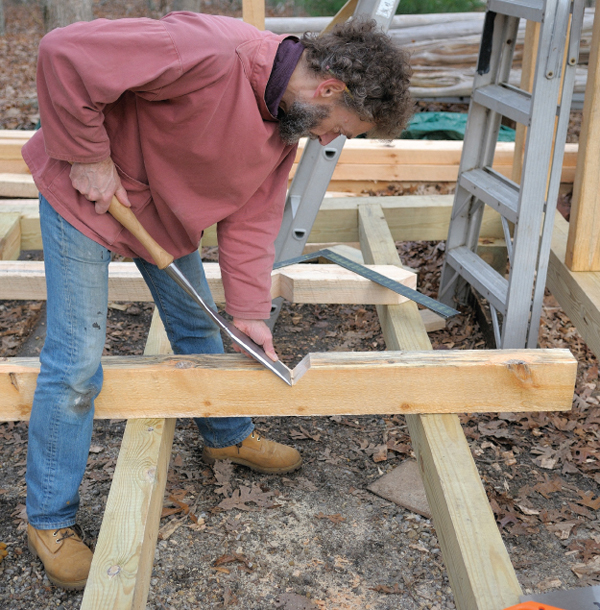
Wood
Todays pressure-treated (P.T.) wood is non-toxic ACQ, but we still recommend washing your hands after using it. (Dont use the scraps in your fireplace either.) If using it for posts that are to be buried in the ground, make sure the label says for ground contact. Most of the pressure-treated wood sold in the US is made from southern pine, which is actually a very pretty type of wood - harder, stronger, and cheaper than white pine. If possible, pick out the lumber yourself, since quality inevitably varies. You should apply clear preservative to cut surfaces, even on pressure-treated wood.
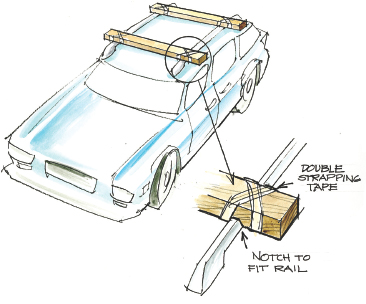
TRANSPORTING LUMBER
If your car has roof bars, you can save a lot of money on delivery charges for lumbereven bulky items such as plywood sheets. Take two 24s 48" long, cut notches in the bottoms to fit over the roof bars, and secure them with duct tape or strapping tape. (Use stainless-steel wire if you are going long distances.)
Fasteners
SCREWS
Screws come in several types, from your grandfathers slotted-head screw to the old standard Phillips head, the newer square head and the most recent improvement, the star head. Unless you want to drive yourself crazy, decide on one type of screw and stick to itits annoying to pick up your screwdriver and find that the bit doesnt match the head of the screw in your other hand. Star-drive screws are the easiest to use because they are least likely to slip, but theyre also the most expensive.

NAILS
Although cheaper than screws, nails are more difficult to remove if you make a mistake - and it can be hard to keep the workpiece in position while hammering a nail in. They dont work well in end-grain wood, but are useful where the load is perpendicular to the nail and to the grain (as in shingling or sheathing). For outdoor applications, only galvanized or rustproof nails should be used.
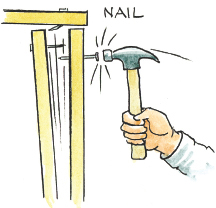
BOLTS
Bolts are the strongest fasteners of all, and will join two pieces of wood with a vise-like grip. They have the added advantage of being easily removed; however, they have to be carefully measured, and in some situations (such as treehouses and playhouses) must be counterbored so that the sharp ends dont become a hazard. The counterbored hole has to be large enough for a socket wrench to tighten the nut.

LAG SCREWS
We use lag screws far more than bolts, because you dont have to be too exact about measuring them and theres no nut & washer needed on the other end. They are ideal for attaching a beam to a tree; but make sure the screw threads catch into the fibers of the tree: drill a pilot hole slightly narrower than the lag screw, and hammer the head of the screw after each turn of the wrench until you feel the threads really biting into the tree. If it turns too easily, you will know its stripping the wood and not really holding.
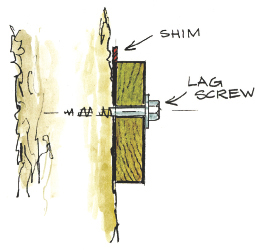
PILOT HOLES
A pilot hole makes the screw go in more easily and accurately, and helps to prevent the wood splitting. The pilot hole in the first piece of wood should be the same diameter as the shank of the screw; in the second it should be narrower, to let the screw threads bite.
When building play equipment for children, recess the sharp heads of bolts or screws by drilling a counterbore hole as wide as the washer before drilling the main hole; otherwise the spade bit has nothing to hold onto and will tear the wood.
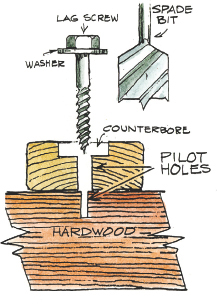
Next page
